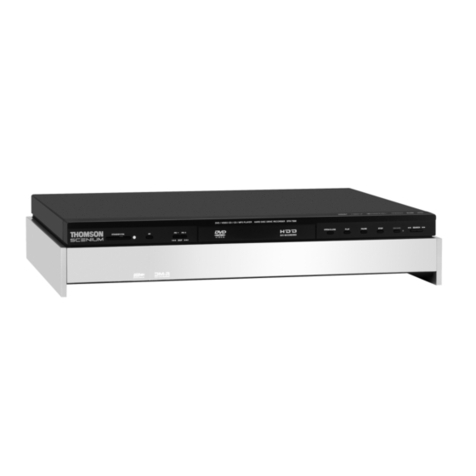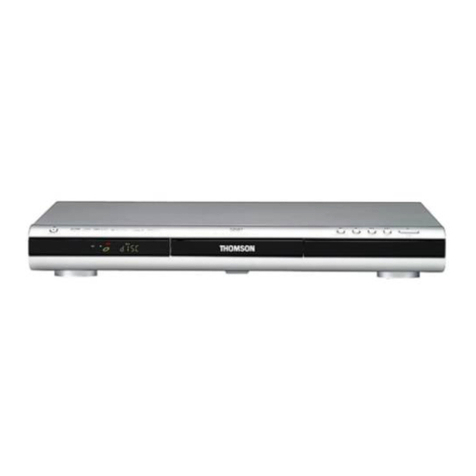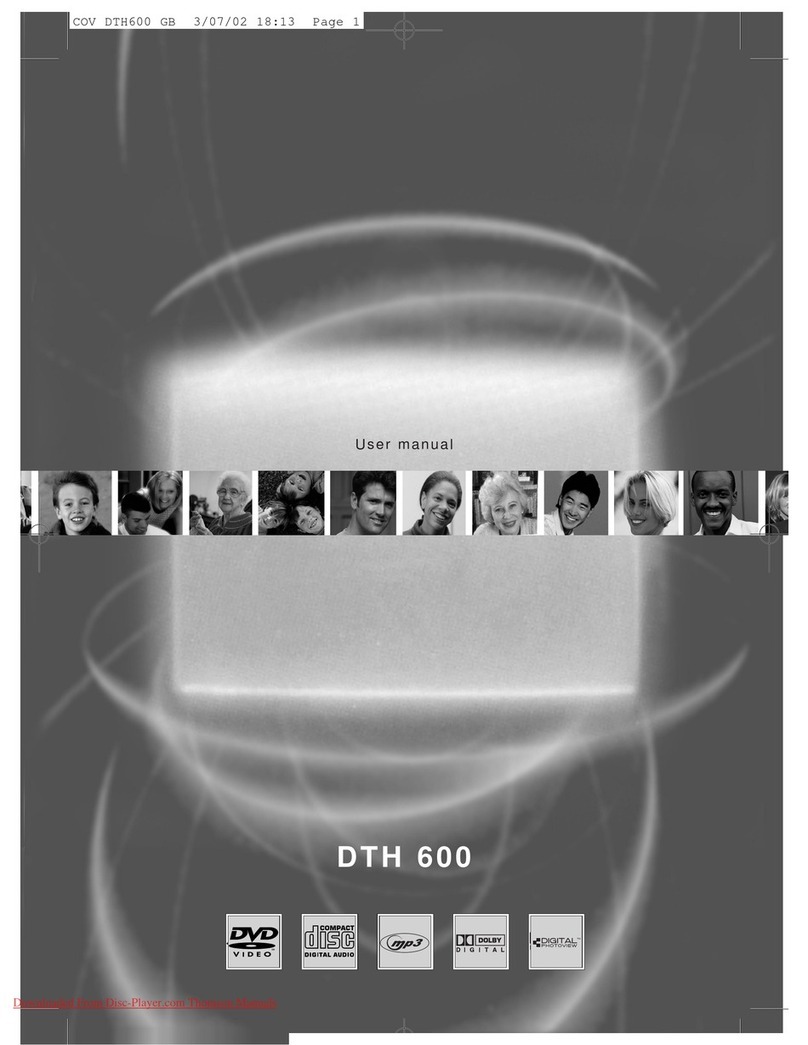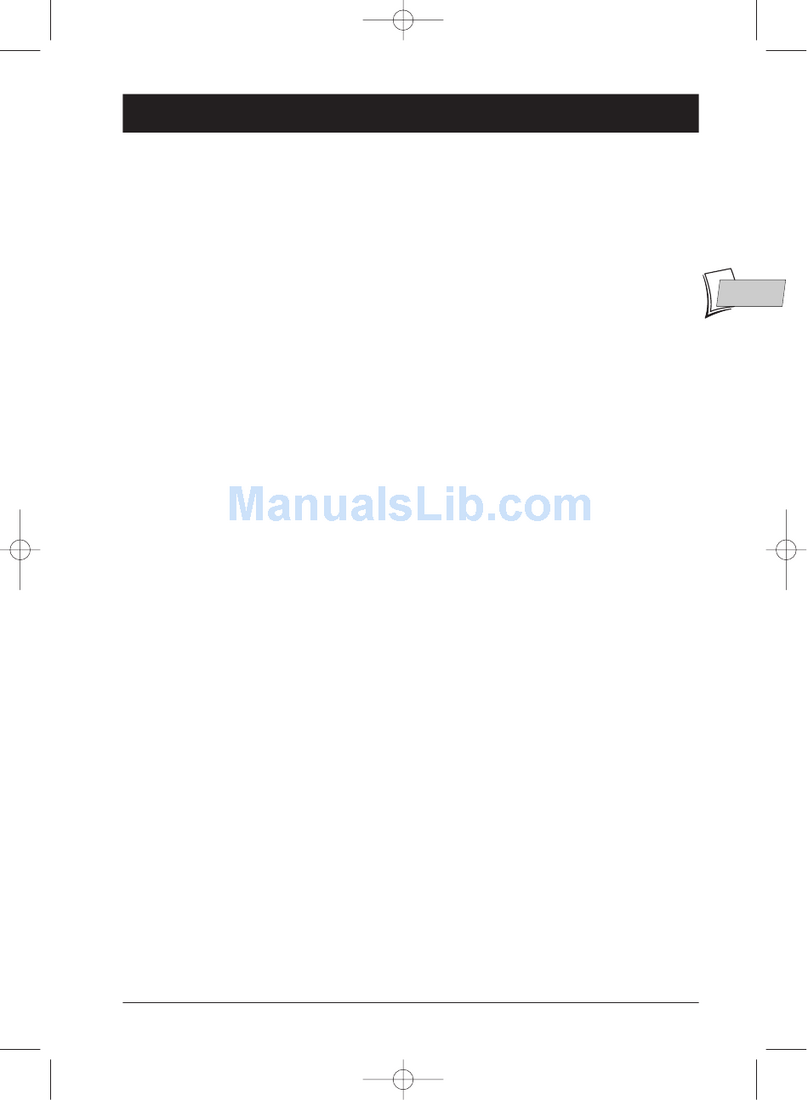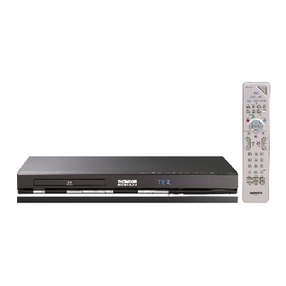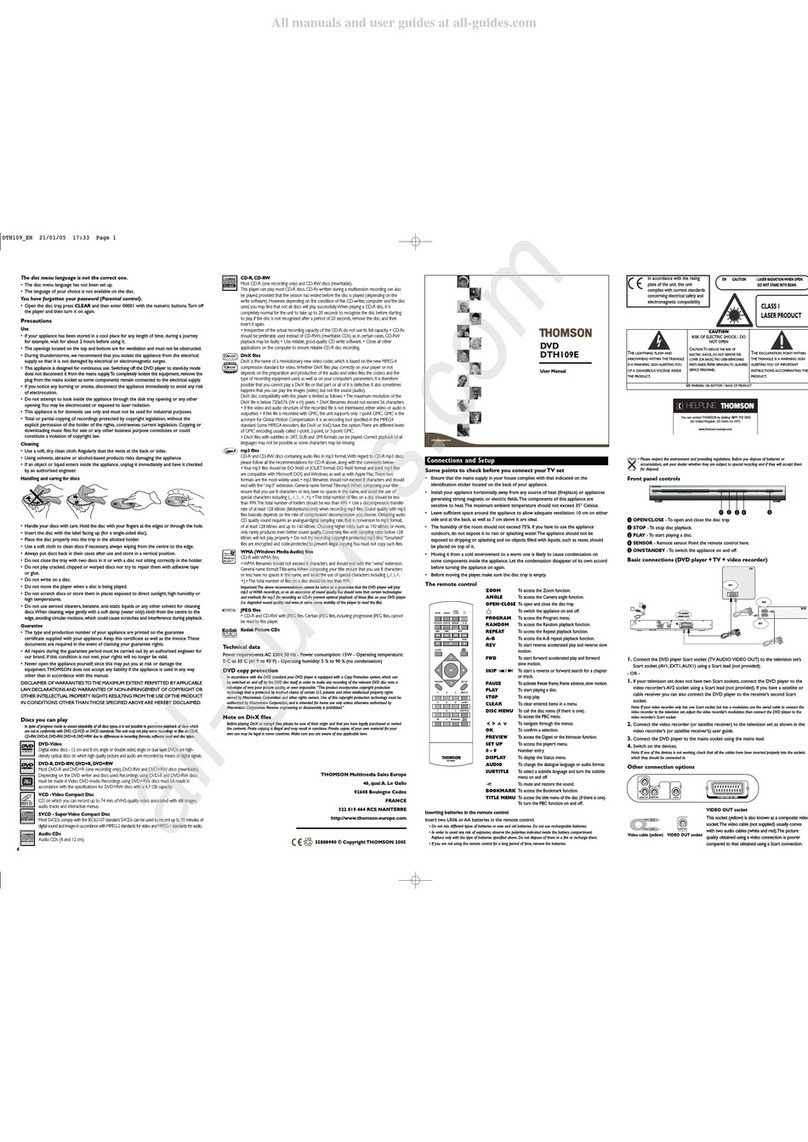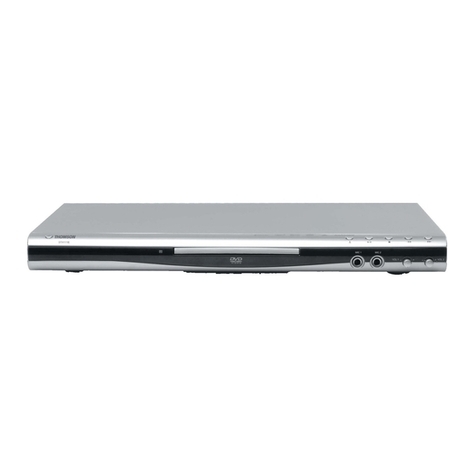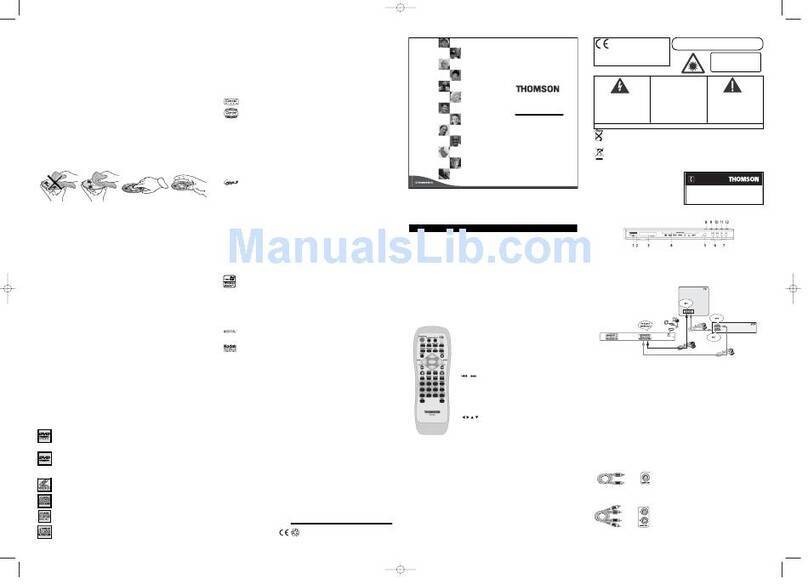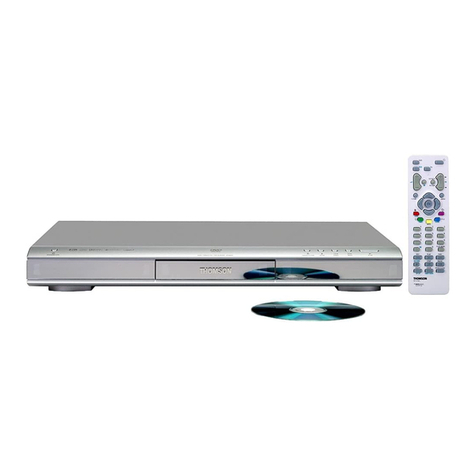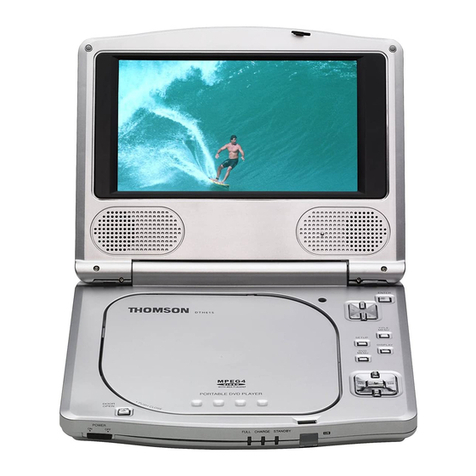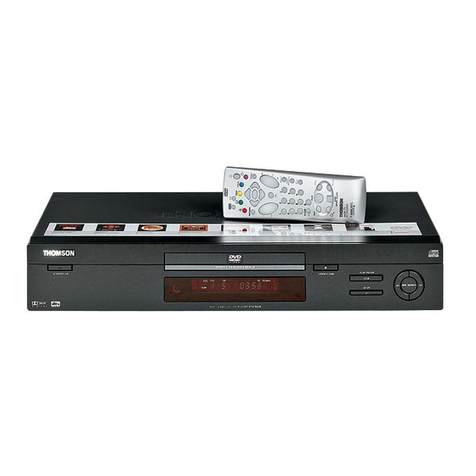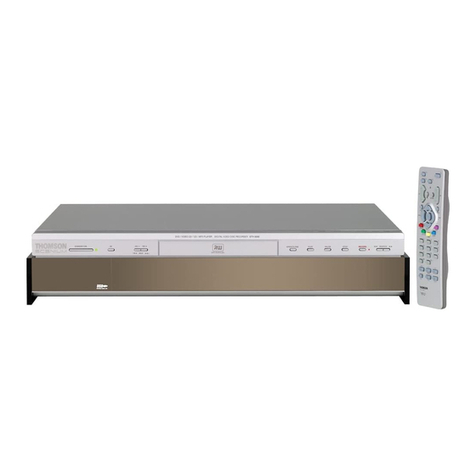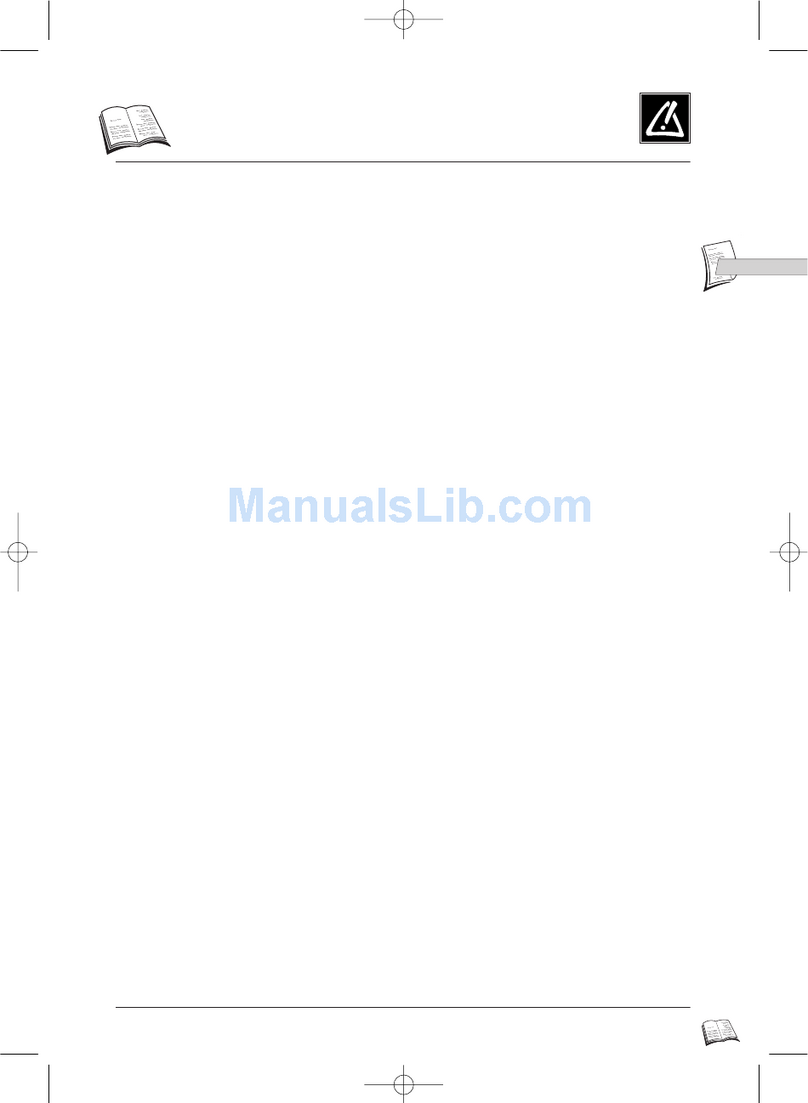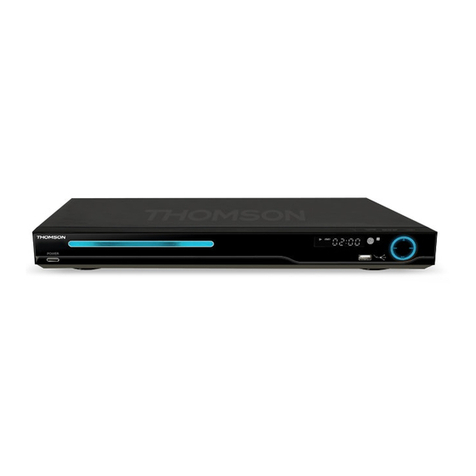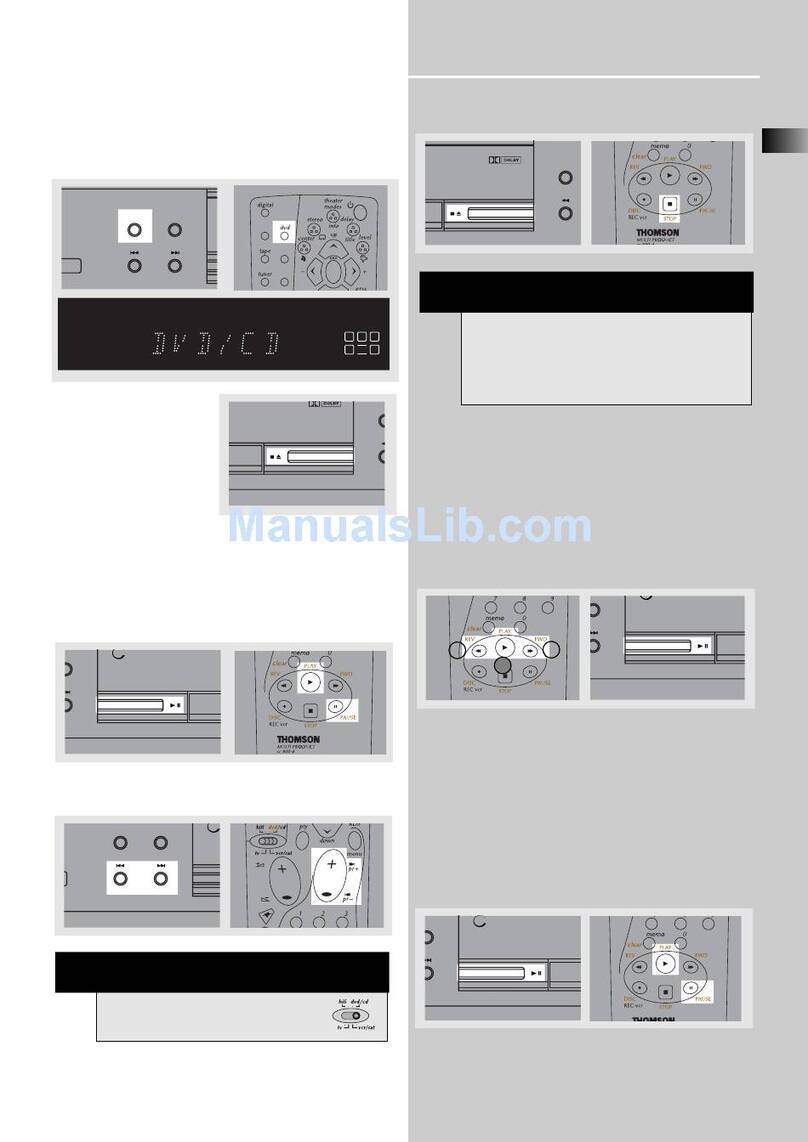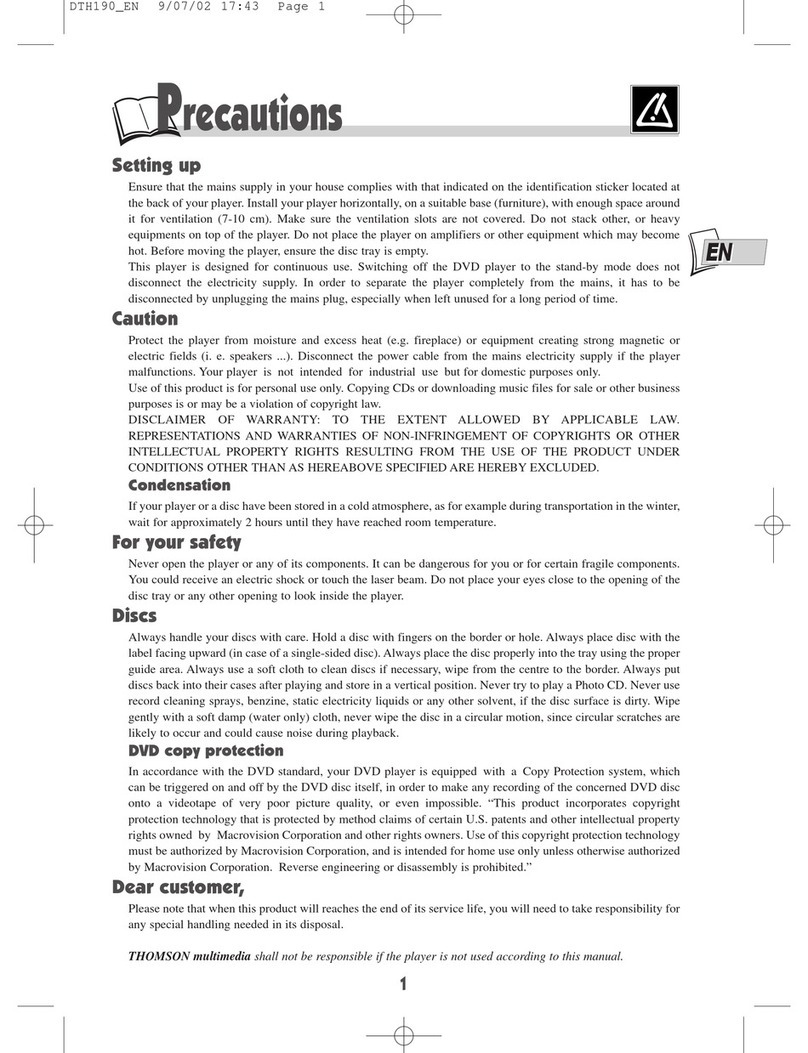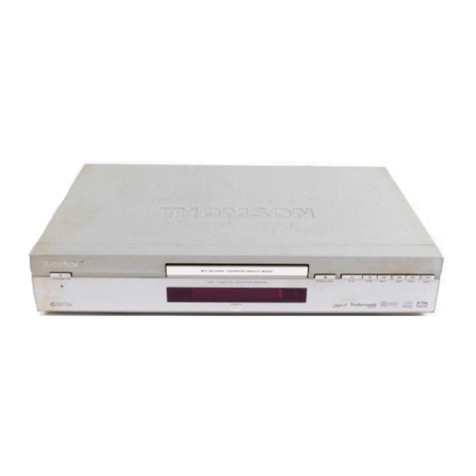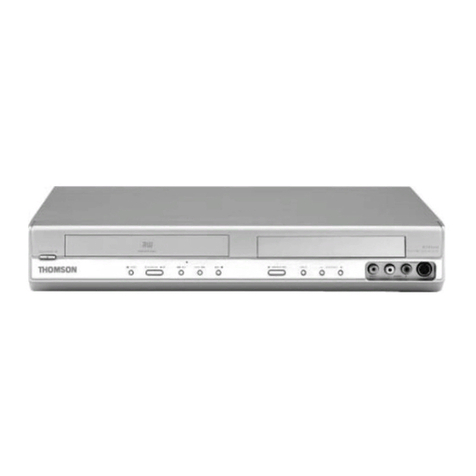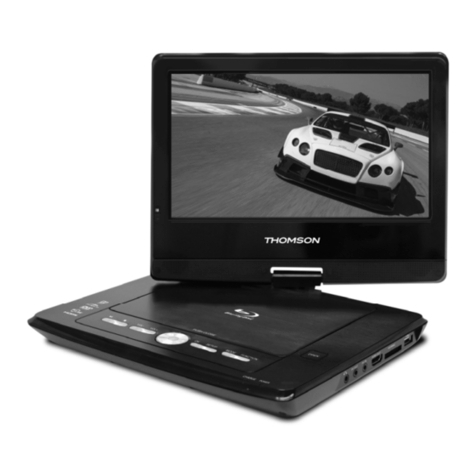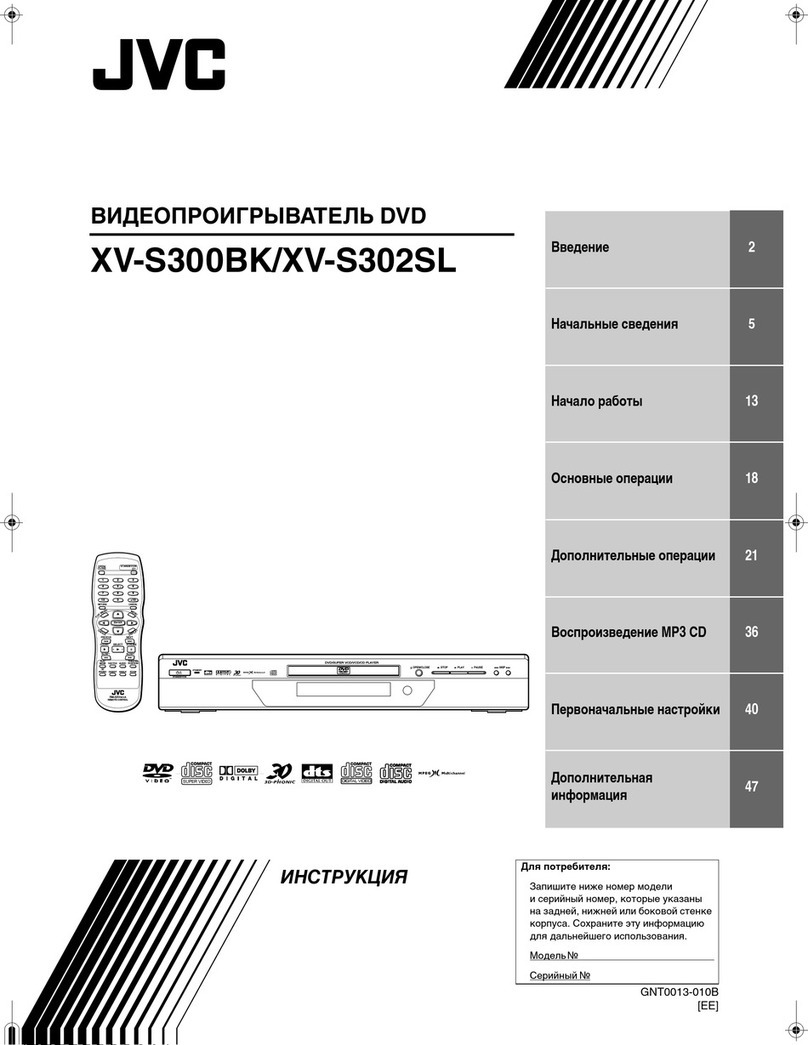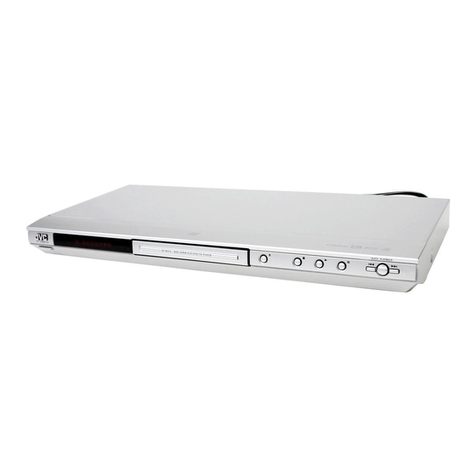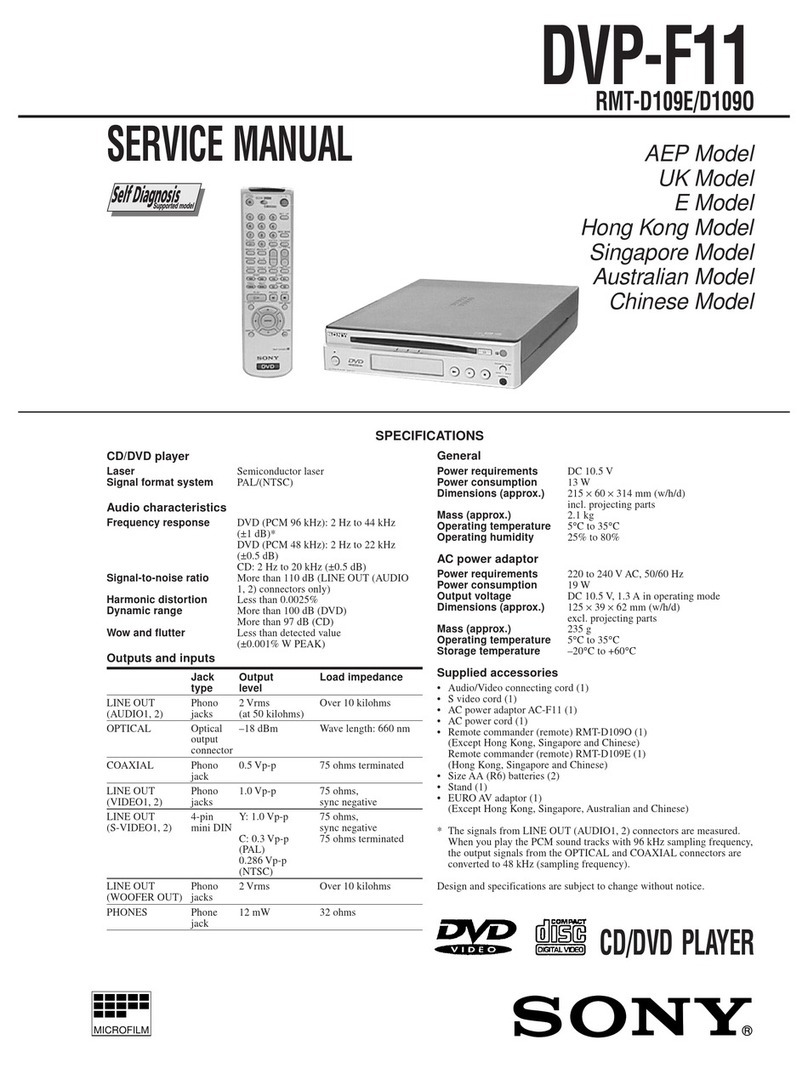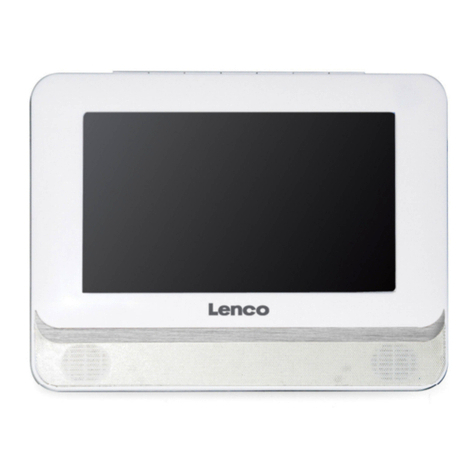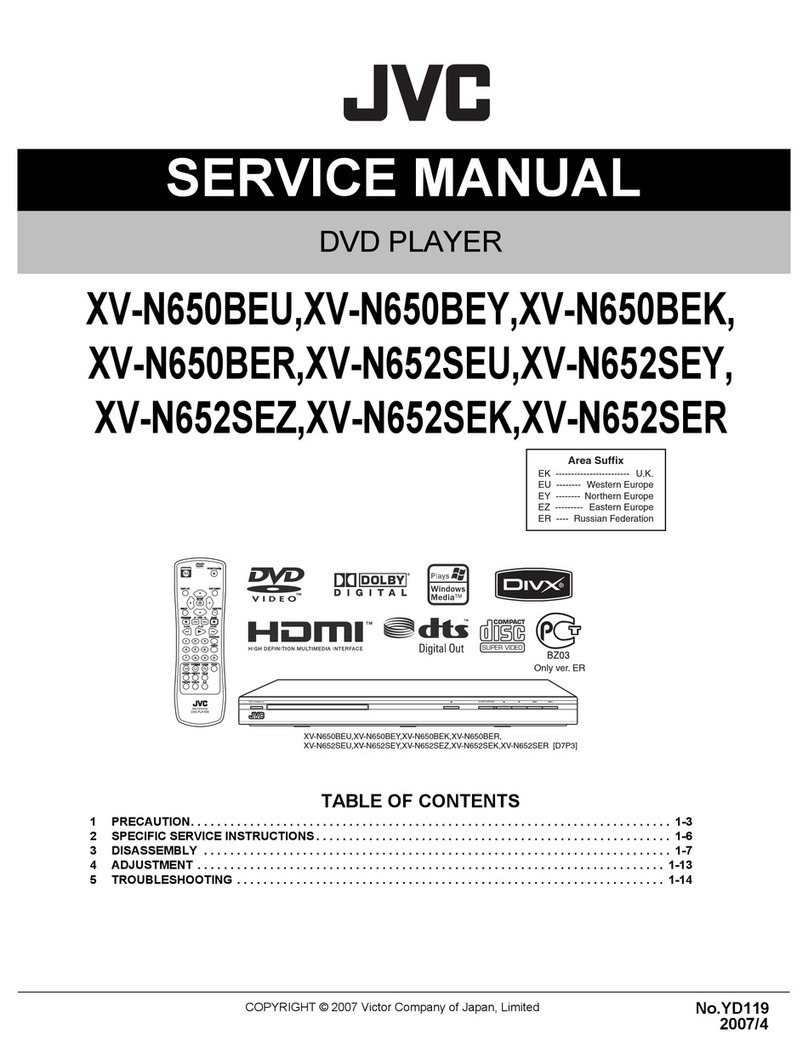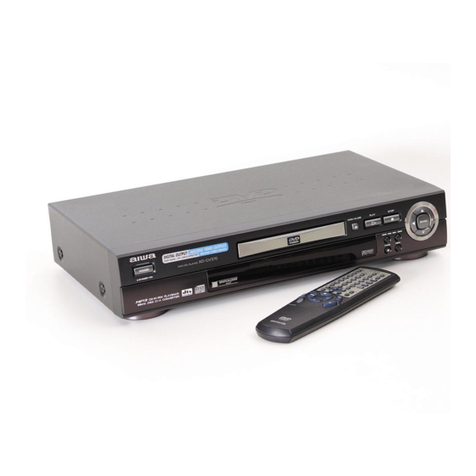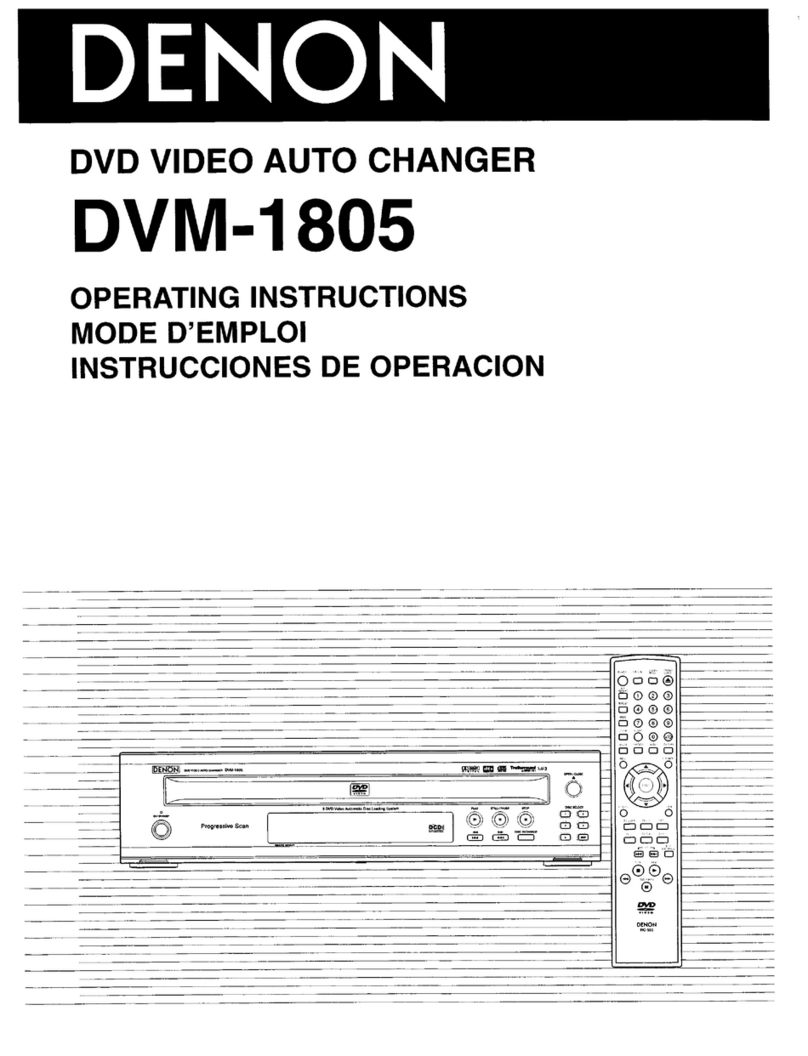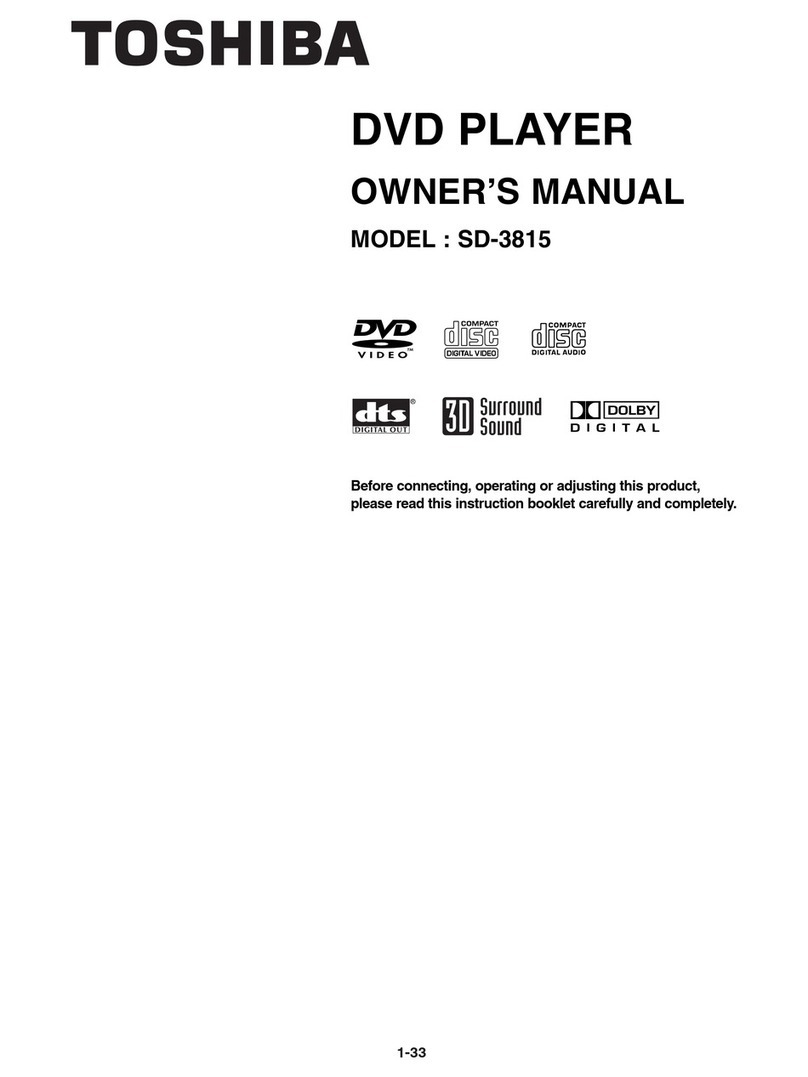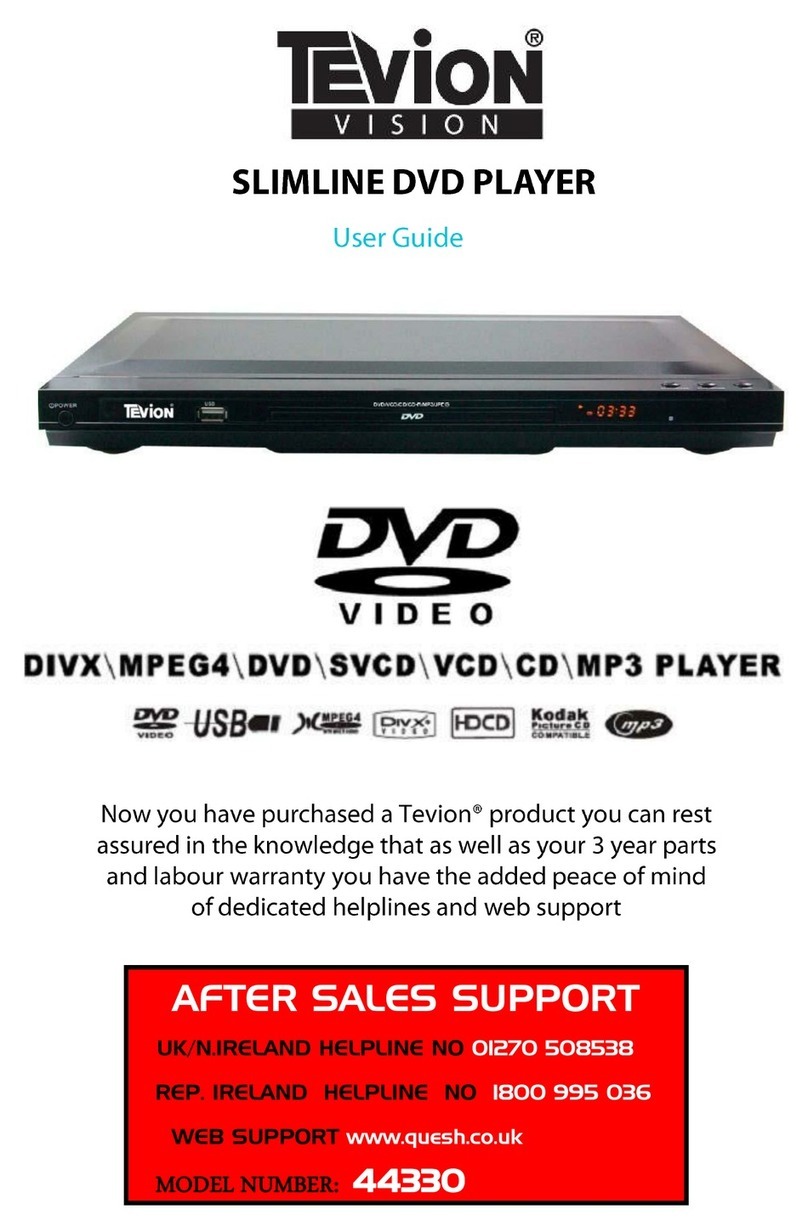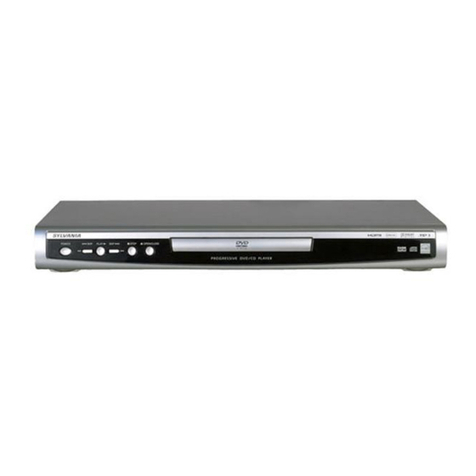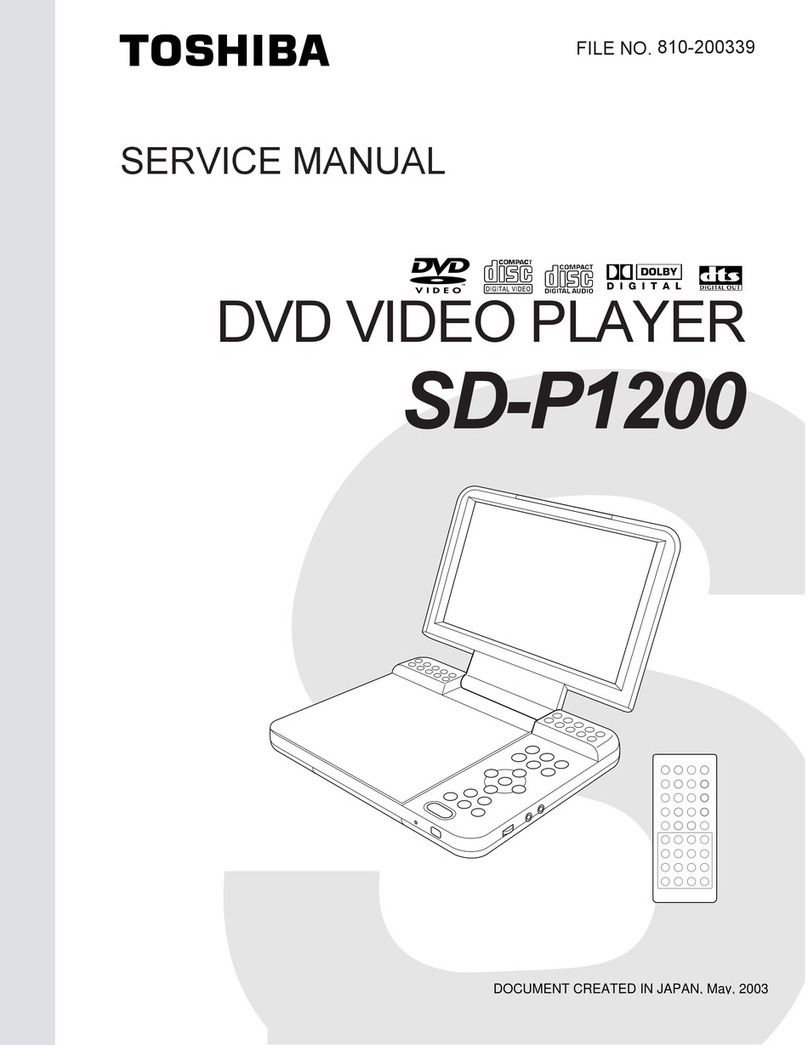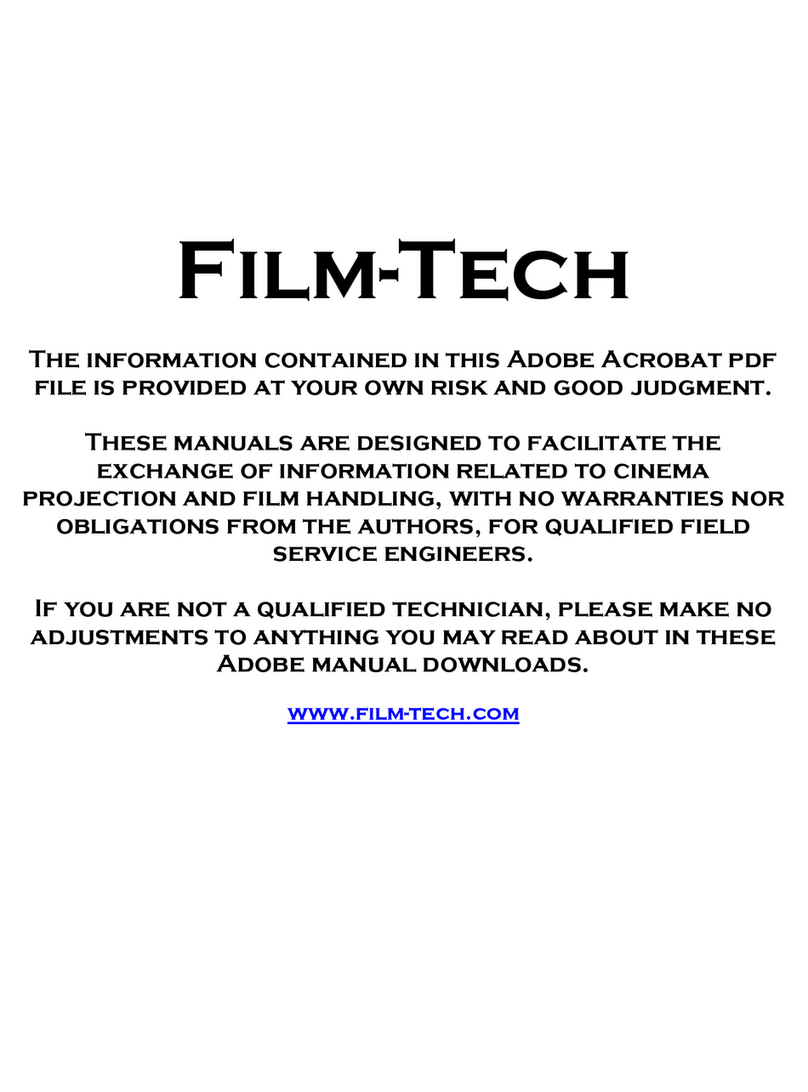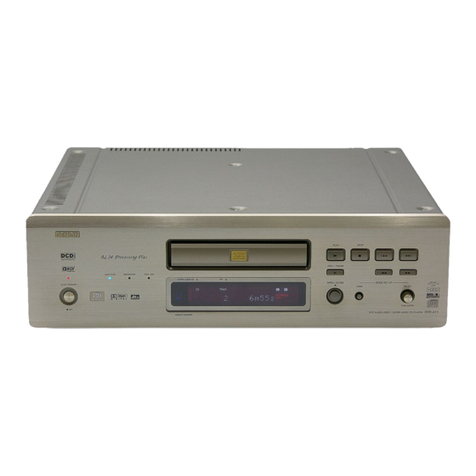1
Contents
EN
EN
Connections and initial set up
Precautions and information before connecting ......2
Setting up the remote control unit ............................2
Important information regarding the batteries..2
Connecting: DVD player + TV set +VCR ....................3
Recommended Audio – Video connection..........3
Other Audio - Video connections ........................3
Sockets and cables ........................................................4
Audio sockets and cables (for sound)..................4
VIDEO sockets and cables (for image)................5
Front panel of the player ..............................................6
Player display panel ......................................................6
Initial player set-up........................................................7
Using the remote control unit correctly ............7
Switch on your DVD player and your TV set ....7
Displays on your player (menus and banners) ..7
Remote control ............................................................8
Description of keys in DVD mode ......................8
Using the remote control unit to control
your TV set or VCR ......................................................9
Controlling a VCR ....................................................9
Controlling a TV set ................................................9
Using the remote to Navigate through On-Screen
Menus..............................................................................9
Playing a disc
Discs you can play........................................................10
Region code numbers of DVD discs ..........................10
Loading and playing a disc..........................................11
Search Options ............................................................12
Quick search of an image or a track..................
12
Still picture and frame advance............................
12
Slow motion (in Pause mode on an image) ......
12
Skipping a chapter or a track ..............................
12
Playback options..........................................................12
Enlarging an image (zoom) ....................................
12
Scene Again™ ..........................................................
12
Using the information banner ..................................13
Information banner with a DVD disc ................13
Information banner with a VCD, SVCD, DivX
discs............................................................................13
Information banner with an Audio CD disc ....13
Timer............................................................................14
Title (DVD) or Track (CD,VCD)................................14
Chapter (DVDs) ..........................................................14
Screen fit (DVDs) ........................................................14
Play modes ..................................................................15
Repeat playback of a scene between two
points A and B (DVD - VCD - SVCD) ..............15
Languages of sub-titles and dialogues (DVD) ..16
Sequence marking (DVDs)....................................16
PBC - Playback control menu (Video CDs) ....16
Camera angles (DVDs)..........................................16
Playing images (JPEG), and sounds
(mp3,WMA) files ........................................................17
Playing sound files (mp3 or WMA) ....................17
Lecture simultanée JPEG et mp3 ou WMA
(images et musique)................................................17
Playing image files (JPEG) ......................................18
Adjusting the speed of the image sequence ....18
Changing images......................................................18
Rotating an image....................................................18
Enlarging an image (zoom) and Pan and Scan
function......................................................................18
To stop the picture sequence and return to
player menu..............................................................18
To play DivX files ........................................................19
Concerning DivX files............................................19
What codecs can your player read? ..................19
Menus
Menus on your DVD player
(basic principles for use) ............................................20
Player menu ..............................................................
20
Sub-menus ................................................................
20
Functions within menus ........................................
20
Play menu ....................................................................21
Start ............................................................................
21
Random play (CDs - mp3 - WMA) ....................
21
Programming playback (Program Play)
(DVDs - CDs - mp3 - WMA) ..............................
21
Automatic playback (AutoPlay) ............................
21
Introscan (CDs) ......................................................
21
Lock menu ..................................................................22
Locking your player ................................................
22
Unlocking you player ..............................................
22
Changing a code......................................................23
Rating limits..............................................................23
Setting a rating limits..............................................23
Discs without rating limits ........................................
23
Display menu ..............................................................24
TV Image menu........................................................
24
PAL or NTSC TV sets............................................
25
Scart output..............................................................
25
Front Display menu ................................................
25
Progressive Scan ......................................................
25
Sound menu ................................................................26
Sound Logic..............................................................26
Virtual Surround......................................................26
Voice + ......................................................................26
Language menus..........................................................27
Further information
Troubleshooting guide ................................................28
Recommendations and information concerning discs
....31
CD-R and CD-RW discs ......................................
31
CD-R and CD-RW discs with mp3 format
“Sound” files ............................................................
31
CD-R and CD-RW discs with JPEG format
“image” files..............................................................
32
Video CD (VCD) discs..........................................
32
Super Video CD (SVCD) discs ............................
32
DVD-R and DVD-RW discs ................................
32
DivX discs
..................................................................32
Caution ........................................................................33
Technical data ..............................................................33
DVD copy protection
In accordance with the DVD standard, your DVD player is equipped with a Copy Protection system, which can be triggered
on and off by the DVD disc itself, in order to make any recording of the concerned DVD disc onto a videotape of very poor
picture quality, or even impossible.“This product incorporates copyright protection technology that is protected by method
claims of certain U.S. patents and other intellectual property rights owned by Macrovision Corporation and other rights
owners. Use of this copyright protection technology must be authorized by Macrovision Corporation, and is intended for home
use only unless otherwise authorized by Macrovision Corporation. Reverse engineering or disassembly is prohibited.”
